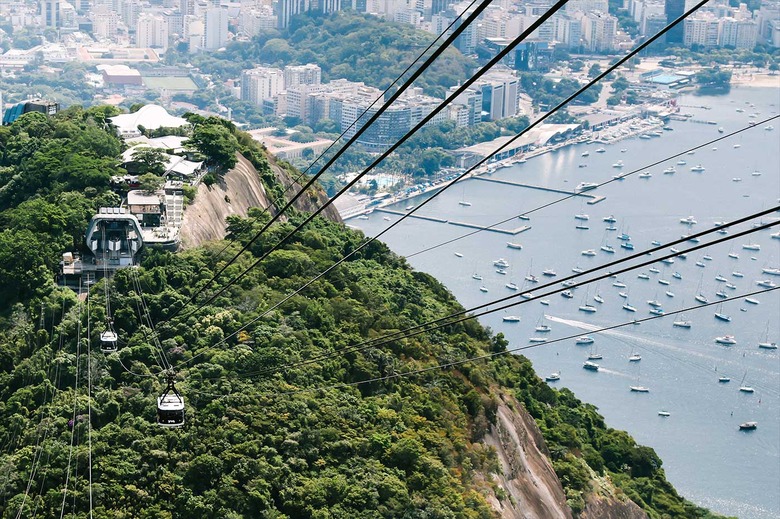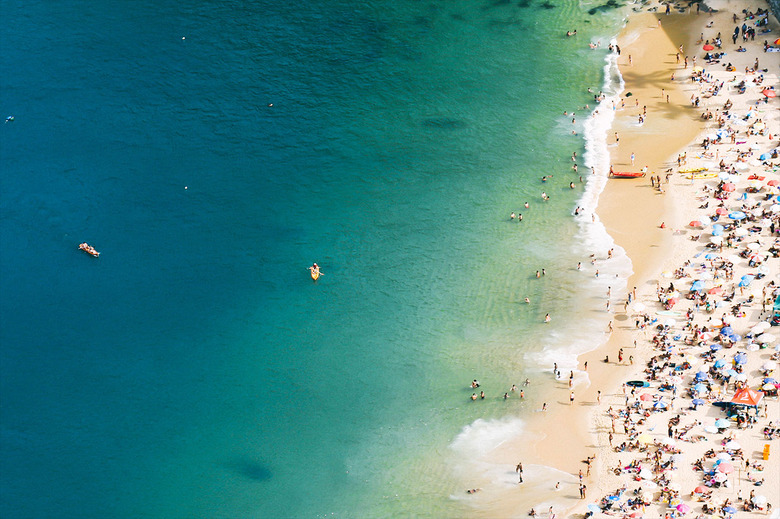How To Navigate Carnaval In Brazil
Carnaval, in Rio de Janeiro, is recognized as one of the most vivacious and iconic celebrations in the world, attracting thousands of locals and travelers alike, all vying for their chance to dance samba in the streets. Although the occasion is joyous and telling of the local Carioca way of life, many would be surprised to learn of the famed festival's complex and much-debated origins.
RELATED Rio's Gold Medal Eats "
Carnaval's roots can be traced back to the ancient Greeks and Romans, who went all out to celebrate the rites of spring. The Catholic Church then adopted facets of the event; starting in the 11th century, Carnaval marked the beginning of Lent, the six-week period before Easter of fasting and abstinence. In fact, legend suggests that the name was derived from the Latin expression carne vale, which translates to "farewell to meat." By the 17th century, the tradition made its way to Brazil but not without evolving along the way and absorbing influences from its cultural predecessors.
The Carnaval that's celebrated in Rio de Janeiro today owes much of its current acclaim to the birth of samba music in the city, which played a critical role in shaping the celebration. Although the Sambadrome is where you'll find the dedicated Carnaval float parades, the real action of Carnaval can be felt everywhere, from the beaches by day to the streets by night.
This year's celebration began February 24 and goes through March 4, the date of the highly anticipated Champion's Parade. If you're headed down to Rio, here are some can't-miss things to do at Brazil's most raucous party.
Watch the Samba Competition
Rio's Carnaval command center is the Sambadrome, a 90,000-person stadium where 12 samba schools dance their hearts out in a spirited, visually stunning competition. The top six are invited to the Carnaval finale on Saturday, March 4, where they'll perform again in the Champion's Parade.
You can opt to explore Carnaval with friends or choose to explore with an operator like Intrepid Travel, who plans every facet of your trip for you.
Join the Parade
Sure, you can feel the excitement of the parades from the grandstands. But if you're looking for an even more immersive experience, consider paying to participate as a dancer in one of the parade groups. Don't worry: Costume's included!
Party with Neighbors
Blocos, or block parties, are held in virtually every neighborhood and feature outlandish costumes, festive samba music, drinks and street food. Free and open to everyone, blocos run day and night, attracting crowds that can climb in number to the tens of thousands.
Dress Up
From rhinestones and feathered wings to colorful ornate headdresses, it's the costumes that help make Carnaval such an arresting sight to behold. Travelers can partake in the sartorial spirit, too: There are plenty of vendors waiting to sell you a flower crown, tutu or glitter for a couple of Brazilian reals.
Check Out Lapa
If you need a break from blocos-hopping, head to Lapa, a popular central district that's famous for its historic monuments and great bars and restaurants. Don't miss the impressive Arcos da Lapa aqueduct and Passeio Público, the city's first public park.
Visit Sugarloaf Mountain
Declared a UNESCO World Heritage Site in 2012, Sugarloaf Mountain (Pão de Açúcar) is Rio's second most popular attraction, following Christ the Redeemer atop Corcovado Mountain. Accessed by a glass-walled cable car, the mountain offers unparalleled views of the city.
Hit the Beach
No trip to Rio would be complete without some beach time. Just past the ultra-crowded Copacabana, you'll find the upscale Ipanema Beach. But if you're seeking an even more secluded stretch, venture to Prainha Beach, where white sands and turquoise waves make it a favorite spot for Cariocas and tourists alike.







